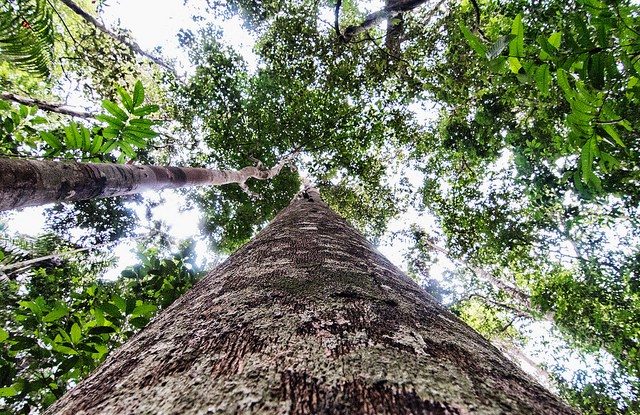
What is a forest? And how do you restore one?
These seemingly simple questions were interrogated – with a focus on solutions – during a panel discussion at the 2017 Association for Tropical Biology and Conservation Meeting, recently concluded in Merida, Mexico.
A group of experts on Latin American forests examined both the conservation and restoration of secondary forests from a variety of angles, including the ecological, political and social dimensions of such spaces.
Beginning with the premise that “secondary forest regrowth following agricultural land use represents a major component of human modified landscapes across the tropics”, the panel emphasized the essential role of secondary forests for humans living in proximity, as well as for restoration initiatives and international goals, such as the United Nations Aichi Biodiversity Targets.
REORIENTING
“Natural regeneration in secondary forests has been overlooked, and can be a restoration tool for large-scale initiatives,” panelist and Center for International Forestry Research (CIFOR) Principal Scientist Manuel Guariguata said.
The 12 July 2017 discussion titled, “The role of tropical secondary forests in conservation and restoration”, was a welcome exploration of these neglected landscapes, formerly native forest cleared for agriculture, ranching or other purposes and later deserted.
Research carried out across the tropics over the last few decades unanimously agrees that these lands, which then start to host trees and shrubs and slowly attract birds and other wildlife on their path to maturity, are valuable in countering primary forest loss and as providers of ecosystem services. With proper management, they provide both timber and non-timber products to people nearby – thereby proffering both social and ecological rewards.
In a presentation titled, “Key governance issues and the fate of secondary forests as a tool for large-scale forest restoration”, Guariguata said, “the permanence of secondary forests in tropical landscapes largely depends on good governance, particularly through continued dialogue between government agencies, particularly environment and agriculture ministries.”
Improved governance for improved forests “would include the recognition that secondary forests are part of highly dynamic land-use systems that can and do change and unlikely to be managed either by a single government sector or scientific discipline,” he added.
IN STEERAGE
This complexity is evident in the myriad of ways secondary forests are engaged with and understood.
Guariguata urged for a multi-faceted, inter-disciplinary approach to improve restoration processes beyond tree planting to incorporate secondary forests.
“Often, because of definitional, technocratic issues, foresters may not see a secondary forest as such because they are looking at specific criteria , even though there may be plenty of trees in secondary forests. Agronomists are trained to look at soil and vegetation and also may not see a forest. But forest smallholders do both – and we shouldn’t overlook that,” Guariguata said in a later interview.
“Education and training at the university level also needs to enhance inter-disciplinarity,” he added.
Secondary forests can naturally regenerate, and with this in mind, there is an argument for letting nature take its course, so to speak. Guariguata said, “There’s a lot of inherent resilience in secondary forests and we can harness that.”
“There is a trade-off, as some of these forests have a central human component and require more effort, others don’t need interventions, but they need governing. The process needs steering.”
STEPPING STONES
Offering examples that demonstrate the differing approaches to secondary forests and the issues involved, from Peru to Indonesia and Ethiopia to Mexico, Guariguata zeroed in on Mexico’s success with steering.
“Mexico is redrafting its Forest Code with a reassessment of their definition of secondary forest. Until 2014, the code restricted traditional harvesting of timber and non-timber forest products due to definitional issues of what is and is not a secondary forest. The revision will allow forest users to harvest products from young secondary forests without a permit,” Guariguata said.
Such progress is in part a result of CIFOR’s recent synthesis on governance of forest restoration.
At the opening of the panel discussion at ATBC, the moderator asked the audience: “Should secondary forest fragments be protected as conservation areas in regions with low forest cover and little primary forest remaining?”
The consensus was “yes,” and as the panel continued to discuss regenerating forests and their role in large-scale restoration initiatives and countries’ increasingly ambitious commitments to reforest degraded lands, the need for protection and proper management of such places became clearer and clearer.
These muddled yet vital spaces have a major role to play in forest landscape restoration, which, ultimately, means helping to mitigate the effects of climate change the world over.
We want you to share Forests News content, which is licensed under Creative Commons Attribution-NonCommercial-ShareAlike 4.0 International (CC BY-NC-SA 4.0). This means you are free to redistribute our material for non-commercial purposes. All we ask is that you give Forests News appropriate credit and link to the original Forests News content, indicate if changes were made, and distribute your contributions under the same Creative Commons license. You must notify Forests News if you repost, reprint or reuse our materials by contacting forestsnews@cifor-icraf.org.